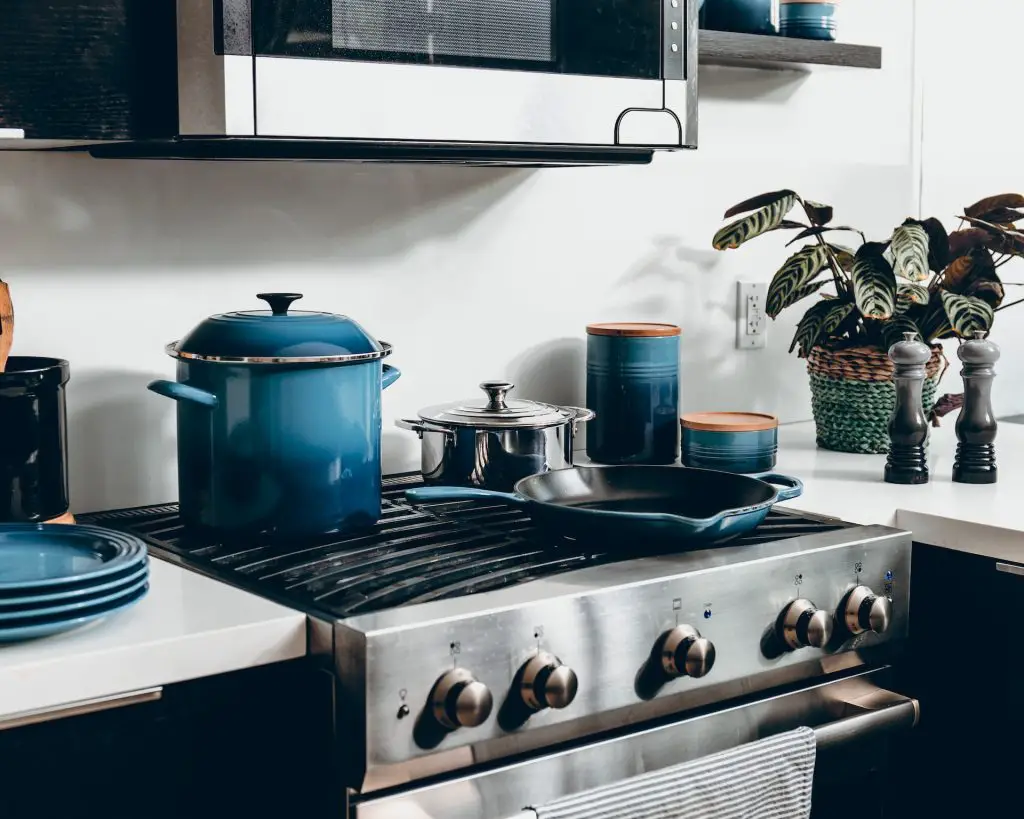Cooking rice is a fundamental skill in many cuisines around the world, and it can be a bit tricky to get it just right. However, with the help of a rice cooker, you can easily achieve consistently perfect rice every time. Whether you’re a novice in the kitchen or a seasoned cook, using a rice cooker simplifies the process and ensures that your rice comes out fluffy and delicious. In this comprehensive guide, we will walk you through the steps of cooking various types of rice in a rice cooker and provide you with tips and tricks to elevate your rice-cooking game.
Choosing the Right Rice Cooker
Before we dive into the nitty-gritty of cooking rice in a rice cooker, it’s important to choose the right appliance for your needs. Rice cookers come in various sizes and styles, so here are some factors to consider when making your selection:
Capacity: Determine how much rice you typically need to cook. Rice cookers come in different capacities, from small ones that can cook a cup or two of rice to larger models that can cook several cups at once.
Features: Some rice cookers offer advanced features such as fuzzy logic technology, multiple cooking modes, and timers. Choose a rice cooker with features that align with your cooking preferences and requirements.
Material: Rice cookers are available in different materials, including stainless steel and non-stick coatings. Consider your preferences and how easy the cooker is to clean when making your choice.
Budget: There are rice cookers available at various price points. Determine your budget and look for a model that offers the features you need within that budget.
Now that you’ve chosen the right rice cooker for your kitchen, let’s get started on how to cook rice perfectly in it.
Step 1: Measuring the Rice
The first step in cooking perfect rice in a rice cooker is to measure the rice accurately. Use the provided measuring cup that comes with your rice cooker or a standard measuring cup. Typically, one cup of uncooked rice will yield about three cups of cooked rice. Adjust the amount of rice according to your needs, keeping in mind the capacity of your rice cooker.
Step 2: Rinsing the Rice
Rinsing the rice is an essential step to remove excess starch, which can make the rice sticky and gummy. Here’s how to rinse rice properly:
Place the measured rice in a fine-mesh strainer or a bowl.
Rinse the rice under cold running water, using your fingers to gently stir and agitate the grains. Continue rinsing until the water runs clear. This may take a minute or two, depending on the type of rice.
Drain the rinsed rice thoroughly to remove excess water.
Rinsing rice is especially important for varieties like sushi rice, jasmine rice, and basmati rice, as it helps achieve the desired texture and flavor.
Step 3: Adding Water
The next crucial step is determining the water-to-rice ratio. The ratio of water to rice can vary slightly depending on the type of rice you’re using, but as a general rule of thumb, use the following ratios:
Long-grain white rice: 1 1/2 to 2 cups of water per cup of rice.
Short-grain white rice: 1 1/4 to 1 1/2 cups of water per cup of rice.
Brown rice: 2 to 2 1/2 cups of water per cup of rice.
Jasmine rice: 1 1/4 to 1 1/2 cups of water per cup of rice.
Basmati rice: 1 1/4 to 1 1/2 cups of water per cup of rice.
Sushi rice: 1 1/4 to 1 1/2 cups of water per cup of rice.
Note that these are general guidelines, and you may need to adjust the water slightly based on your rice cooker’s instructions and your personal preferences for rice texture.
Step 4: Adding Seasonings (Optional)
While plain rice is delicious on its own, you can enhance its flavor by adding seasonings such as salt, a knob of butter, or a splash of oil. Some rice cookers even have a sauté function that allows you to briefly cook aromatics like garlic and onions before adding the rice and water.
If you choose to add seasonings, be mindful of the quantities to avoid overdoing it. A pinch of salt or a small amount of butter can go a long way in elevating the taste of your rice.
Step 5: Cooking in the Rice Cooker
Now that you’ve measured, rinsed, and seasoned your rice, it’s time to start the cooking process in your rice cooker. Follow these steps:
Place the rinsed rice in the inner pot of the rice cooker.
Add the appropriate amount of water, according to the water-to-rice ratio for your chosen type of rice.
If your rice cooker has a specific setting for the type of rice you’re cooking (e.g., sushi, brown, jasmine), select that setting. Otherwise, the basic “white rice” setting is suitable for most varieties of white rice. For brown rice, use the “brown rice” setting if available.
Close the lid securely, and press the “Cook” button to start the cooking cycle.
Let the rice cooker do its magic. It will automatically switch to the “Keep Warm” mode once the rice is cooked, which usually takes around 15-30 minutes, depending on the rice type and quantity.
Step 6: Letting It Rest
After the rice cooker switches to the “Keep Warm” mode, it’s essential to let the rice rest for about 10-15 minutes. During this resting period, the rice continues to steam and evenly distribute moisture, resulting in fluffier, more evenly cooked rice. Keep the lid closed during this time to trap the steam.
Step 7: Fluffing and Serving
Once the resting period is complete, open the rice cooker lid and use a fork or a rice paddle to gently fluff the rice. Be careful not to mash the grains while fluffing. Fluffing the rice helps release excess steam and ensures that the grains remain separate and light.
Now, your perfectly cooked rice is ready to serve as a side dish, a base for stir-fries, sushi, or any other dish you desire. Remember that freshly cooked rice is at its best, so try to serve it promptly.
Tips for Cooking Perfect Rice in a Rice Cooker
Use high-quality rice: Start with good-quality rice for the best results. Fresh rice with the right moisture content will yield better-tasting results.
Be consistent with measurements: Always use the same measuring cup for both rice and water to maintain the proper ratio.
Adjust for altitude: If you live at a high altitude, you may need to slightly increase the water-to-rice ratio or use the rice cooker’s “high altitude” setting if available.
Experiment with seasonings: Don’t be afraid to experiment with different seasonings and flavors to complement your dishes. Add herbs, spices, or even coconut milk for unique flavors.
Maintain your rice cooker: Regularly clean your rice cooker’s inner pot, lid, and sealing ring to prevent rice from sticking and ensure consistent results.
Avoid opening the lid during cooking: Resist the temptation to open the lid while the rice is cooking, as this can disrupt the cooking process.
Use a timer: If your rice cooker doesn’t have a built-in timer, set an external timer to remind you to fluff the rice after the resting period.
Cooking rice in a rice cooker is a straightforward process, and with a little practice, you can achieve perfect results every time. Whether you prefer fluffy white rice, nutty brown rice, fragrant jasmine rice, or sticky sushi rice, following the steps outlined in this guide will help you master the art of cooking rice in your rice cooker. With the right choice of rice, proper measurements, and a few optional seasonings, you can elevate your meals and enjoy delicious, perfectly cooked rice as the foundation for a variety of dishes. So, go ahead, unleash your culinary creativity, and savor the satisfaction of serving flawlessly cooked rice to your family and friends.
Exploring Rice Varieties and Special Techniques
In the previous section, we covered the fundamentals of cooking rice in a rice cooker. Now, let’s delve deeper into specific rice varieties and explore some advanced techniques to take your rice-cooking skills to the next level.
Cooking Different Rice Varieties
Each rice variety has its unique characteristics, and knowing how to cook them properly ensures you get the best flavor and texture. Let’s take a closer look at some popular rice varieties:
Brown Rice:
Brown rice is a nutritious whole grain that retains the bran and germ layers, making it higher in fiber and nutrients than white rice.
Use the “brown rice” setting on your rice cooker, or if it doesn’t have one, simply use a 2:1 water-to-rice ratio.
Brown rice takes longer to cook than white rice, so be patient and allow extra time for the cooking cycle and resting period.
Jasmine Rice:
Jasmine rice is known for its fragrant aroma and slightly sticky texture.
Use the “white rice” setting on your rice cooker with a 1.25:1 water-to-rice ratio.
Add a pandan leaf or a couple of slices of fresh ginger for added flavor.
Basmati Rice:
Basmati rice is long-grain rice famous for its aroma, distinct flavor, and separate grains.
Use the “white rice” setting with a 1.25:1 water-to-rice ratio.
For extra flavor, consider toasting the rice in a bit of oil or butter before cooking.
Sushi Rice:
Sushi rice is short-grain rice used for making sushi and other Japanese dishes.
Use the “sushi rice” setting if available, or use a 1.25:1 water-to-rice ratio.
Season the cooked sushi rice with a mixture of rice vinegar, sugar, and salt for authentic sushi flavor.
Wild Rice Blend:
Wild rice blends often contain a mixture of wild rice and other grains.
Follow the instructions on the packaging for water-to-rice ratios, as it can vary depending on the blend.
Advanced Techniques
Cooking Flavored Rice:
For a change of pace, try cooking rice with broth instead of water. Vegetable, chicken, or beef broth can add depth and richness to your rice dishes.
Add spices and herbs like saffron, cardamom, or bay leaves to infuse your rice with unique flavors.
Vegetable and Rice Steamer:
Many modern rice cookers come with a steamer basket that allows you to cook vegetables or proteins simultaneously with your rice. This is a convenient way to create complete meals.
Cooking Multiple Layers:
If your rice cooker has a multi-layer cooking option, you can prepare a full meal by cooking rice in the bottom layer and a protein or vegetables in the upper layer. This is an excellent way to save time and energy.
Sticky Rice for Asian Desserts:
To make sticky rice for delicious Asian desserts like mango sticky rice, soak glutinous rice for several hours before cooking it in your rice cooker. The “sweet rice” setting, if available, is ideal for this.
Crunchy Rice (Tahdig):
For Persian-style crispy rice (tahdig), layer thinly sliced potatoes or lavash bread at the bottom of the rice cooker before adding rice and water. Cook until the bottom forms a golden crust.
Mastering the art of cooking rice in a rice cooker opens up a world of culinary possibilities. Whether you’re preparing a simple side dish, a complex multi-layered meal, or experimenting with different rice varieties, the key is to start with high-quality rice and pay attention to the details of measuring, rinsing, and seasoning.
As you become more familiar with your rice cooker and various rice varieties, you’ll develop an intuitive sense of timing and flavor profiles. Don’t hesitate to get creative with your rice dishes by incorporating different seasonings, ingredients, and techniques.
With the knowledge and skills acquired from this guide, you’ll consistently achieve perfectly cooked rice that serves as a delightful canvas for a wide range of cuisines and flavors. So, grab your favorite rice cooker and embark on a culinary journey where every grain of rice is a testament to your expertise in the kitchen. Happy cooking!




